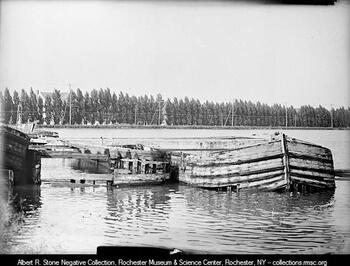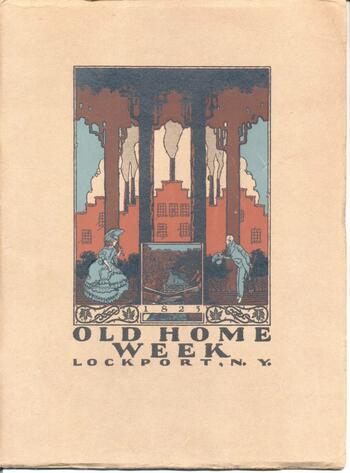By the mid-twentieth century, several factors began to change the role and perception of the Canal. Shipping quickly dropped off when the new St. Lawrence Seaway, completed in 1959, allowed ocean-going vessels to travel straight to the Great Lakes. While the Erie Canal continued to carry some bulk cargos on barges, pleasure crafts began to outnumber commercial vessels. Both the Erie Canal and the national railroad system also began to face stiff competition from the postwar federal interstate highway construction program in the 1950s. Just as the Erie Canal had been built in response to national defense needs recognized in the War of 1812, the Federal-Aid Highway Act of 1956 intended to address the logistical weaknesses of the national defense acknowledged during World War II. This eventually gave truck transportation the edge over both rail and canal alternatives.
As the 1972 Clean Water Act gained traction, recreational uses of the Canal increased exponentially and it became a magnet for tourists. With the creation of the Erie Canalway National Heritage Corridor, the history of the Canal became an additional and eventually primary attraction.
This photograph shows the Erie Canal at Palmyra, New York, in 2008. As canal traffic declined, so did revenue for repairs and maintenance, making the Canal a less than attractive investment for commercial businesses to transport their goods. Courtesy of Brigham Young University - Harold B. Lee Library via Mountain West Digital Library.
In this photograph, abandoned canal boats deteriorate in the "boat graveyard" at Eastern Widewaters, near Rochester. Courtesy of Rochester Museum & Science Center via Rochester Regional Library Council and Empire State Digital Network.
The Erie Canal was a central focus of the 1925 Old Home Week celebrations in Lockport, New York, a city born of the Canal. This program cover illustrated the event's theme. Courtesy of Niagara County Historical Society via Western New York Library Resources Council and Empire State Digital Network.

